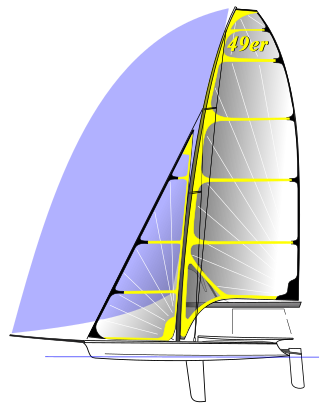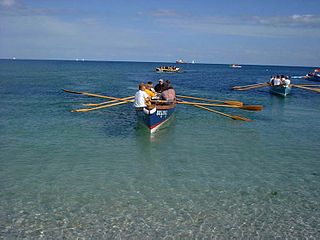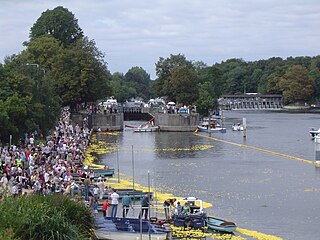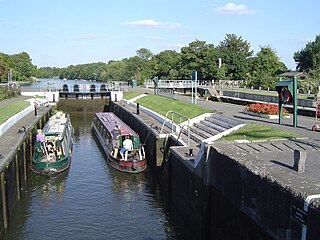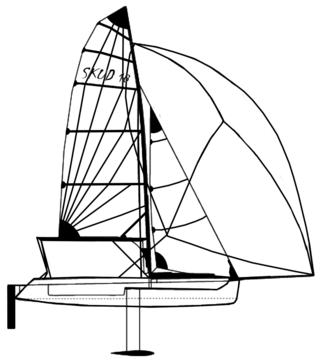By location
United Kingdom

The term has been used for a number of styles of craft round the United Kingdom, often small river and sea going craft. They varied from double ended rowing boats to small sailing boats. The poet John Milton refers to a "night foundered skiff" in Paradise Lost as early as 1670. There are references to skiffs involved in accidents on the River Thames as early as 1812, [4] and 1824 at Oxford. [5] In August 1815, the poet Percy Bysshe Shelley was taken on an expedition by skiff from Old Windsor to Lechlade by Charles Clairmont and Thomas Love Peacock. [6] He subsequently settled at Marlow, where he regularly rowed his skiff through the locks. [7] Shelley later drowned sailing in a skiff off the coast of Italy. A skiff was also mentioned in Sir Walter Scott's poem The Lady of the Lake .
The Thames skiff became formalised as a specific design in the early part of the 19th century. It is a round-bottomed clinker-built rowing boat that is still very common on the River Thames and other rivers in England. Rowing skiffs became very popular in Victorian Britain, and a skiff journey up the River Thames is described in Three Men in a Boat by Jerome K. Jerome. [8] These skiffs could carry a sail and could be used for camping. Although general usage has declined, skiffs are still used for leisure and racing. During the year, skiffing regattas are held in various riverside towns in England, the major event being the Skiff Championships Regatta at Henley.
Akin to the skiff is the yoal or yole, which is a clinker-built boat used for fishing in the Orkney and Shetland Islands. The boat itself is a version of the Norwegian Oselvar which is similar to a skiff in appearance, while the word is cognate with "yawl". The French yole is a leisure craft similar to the Thames Skiff and is translated as "skiff", while the French skiff translates to a single scull. In Dutch and German, "Skiff" also means a single scull, while Czech skif refers to sculling boats in general.
Regattas are also held across Northern Ireland, with one of the largest being held in Portadown, but smaller events take place throughout the year across County Down. [9] [10] [11]
Americas

In American usage, the term is used for small sea-going fishing boats. It is referred to historically in literature in Moby-Dick by Herman Melville [12] and The Old Man and the Sea by Ernest Hemingway. [13] Boats powered by sails or by oars can be referred to as skiffs.
One usage of the word refers to a typically small flat-bottomed open boat with a pointed bow and a flat stern originally developed as an inexpensive and easy-to-build boat for use by inshore fishermen. Originally designed to be powered by rowing, their form has evolved to be powered by outboard motors. The design is still in common use today for both work and pleasure craft. They can be made of wood or other materials. A similar style of craft in Central America and Mexico is generally called a panga.




